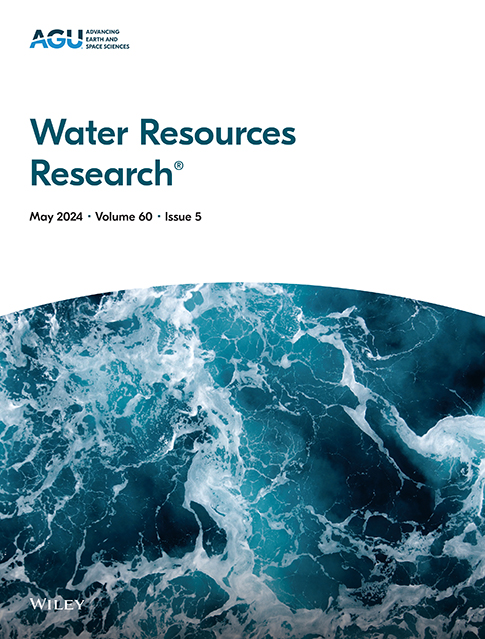沿海流域最大水深的后推算:在机器学习模型中纳入航道外数据及其不确定性的重要性
IF 5
1区 地球科学
Q2 ENVIRONMENTAL SCIENCES
引用次数: 0
摘要
在缺乏对河道外区域的充分观测的情况下,洪水模型通常是根据河流水深进行训练和验证的。这种方法对于包含底层物理过程的基于物理的模型是有效的,但对于机器学习(ML)算法等数据驱动模型的效率尚不清楚。现有的航道外观测如高水位标记(HWMs)也存在不确定性。本文解决了三个研究问题:(a)用流计训练的ML模型在离河道区域的水深反演中有多大用处?(二)纳入HWMs的不确定性如何改善模型的性能?(c)纳入不确定性是否改善了模式对其他流域和事件的可转移性?为了回答这些问题,我们在三次飓风(迈克尔、艾达和伊恩)期间评估了美国三个大型沿海流域的ML模型的性能。该模型是在三种情景下开发的,这些情景在用于训练和验证的洪水观测数据(流计和HWMs)方面有所不同。提出了一种损失函数来结合观测值的不确定性。我们发现,仅通过流量表训练的ML模型仅在流预测中表现良好。通过损失函数结合hwm的不确定性,得到了对非信道区域的满意预测。这种不确定性的结合减少了模式偏差,并导致了对其他沿海流域和洪水事件的最佳可转移性。我们的研究为开发可转移的ML模型提供了见解,该模型可用于在极端事件期间沿海流域的河流和航道外区域的水深反演。本文章由计算机程序翻译,如有差异,请以英文原文为准。
Hindcasting Maximum Water Depths in Coastal Watersheds: The Importance of Incorporating Off-Channel Data and Their Uncertainties in Machine Learning Models
In the absence of adequate observations on the off-channel areas, flood models are typically trained and validated against stream water depths. This approach can be efficient for physics-based models, which incorporate the underlying physical processes, but the efficiency for data-driven models like machine learning (ML) algorithms is unclear. The existing off-channel observations like high-water marks (HWMs) are also subject to uncertainty. This paper addressed three research questions: (a) how useful are ML models, trained with stream gauges, for hindcasting water depths in the off-channel areas? (b) how does incorporating the uncertainty of HWMs improve the model performance? and (c) does the uncertainty incorporation improve the model transferability to other watersheds and events? To answer these questions, we evaluated the performance of ML models across three large coastal watersheds in the US during three hurricanes—Michael, Ida and Ian. The model was developed under three scenarios, which differed in terms of the flood observational data (stream gauges and HWMs) used for their training and validation. A loss function was proposed to incorporate the uncertainty of observations. We found that ML models trained solely by stream gauges performed well only for stream hindcasts. Satisfactory hindcasts on off-channel areas were obtained by incorporating the HWMs' uncertainty via the loss function. This uncertainty incorporation reduced the model bias and resulted in the best transferability to other coastal watersheds and flood events. Our study provides insights about developing transferable ML models for hindcasting water depths on streams and off-channel areas in coastal watersheds during extreme events.
求助全文
通过发布文献求助,成功后即可免费获取论文全文。
去求助
来源期刊

Water Resources Research
环境科学-湖沼学
CiteScore
8.80
自引率
13.00%
发文量
599
审稿时长
3.5 months
期刊介绍:
Water Resources Research (WRR) is an interdisciplinary journal that focuses on hydrology and water resources. It publishes original research in the natural and social sciences of water. It emphasizes the role of water in the Earth system, including physical, chemical, biological, and ecological processes in water resources research and management, including social, policy, and public health implications. It encompasses observational, experimental, theoretical, analytical, numerical, and data-driven approaches that advance the science of water and its management. Submissions are evaluated for their novelty, accuracy, significance, and broader implications of the findings.
 求助内容:
求助内容: 应助结果提醒方式:
应助结果提醒方式:


